This post is about a crockpot Thai Curry recipe I have been using for a while as well as how to make it vegan if desired. I am going to start with an introduction, but click here if you just want the recipe.
Introduction
Apparently every single blog post recipe is required to have this part, so let’s get on with it. My grandmother’s dog brought this recipe from the old country when she immigrated over before becoming the first foreign K-9 unit ever in her state. Kidding aside, this recipe is just a culmination of a few recipes that worked which I tweaked to get more of what I want out of the recipe. This recipe is decently rich, but you can just add water and maybe some extra vegetables to bring down the richness.
This recipe has quite a few allergens, coconut, soy (depending on one ingredient), peanuts, etc. I won’t include any substitutions for this, because this recipe is un-doable for me with any kind of substitutions. This recipe is easily adapted to be vegan as well. I will notate where the ingredients can be swapped out.
One of the tricks I found for avoiding things like fish sauce is to use something like Vegemite or some other yeast extract thing. Fish sauce is basically made from fish which is fermented in a very specific way, so I found that fermented yeast or some other kind of yeast extract helped approximate what the fish sauce contributed (though it is a bit different than using fish sauce, it still adds that richness and hint of umami which is necessary). Even though fish sauce may not have the sweetest aroma, it, or similarly fermented or similar products add a certain flavor and smell that is essential.
The Recipe Itself
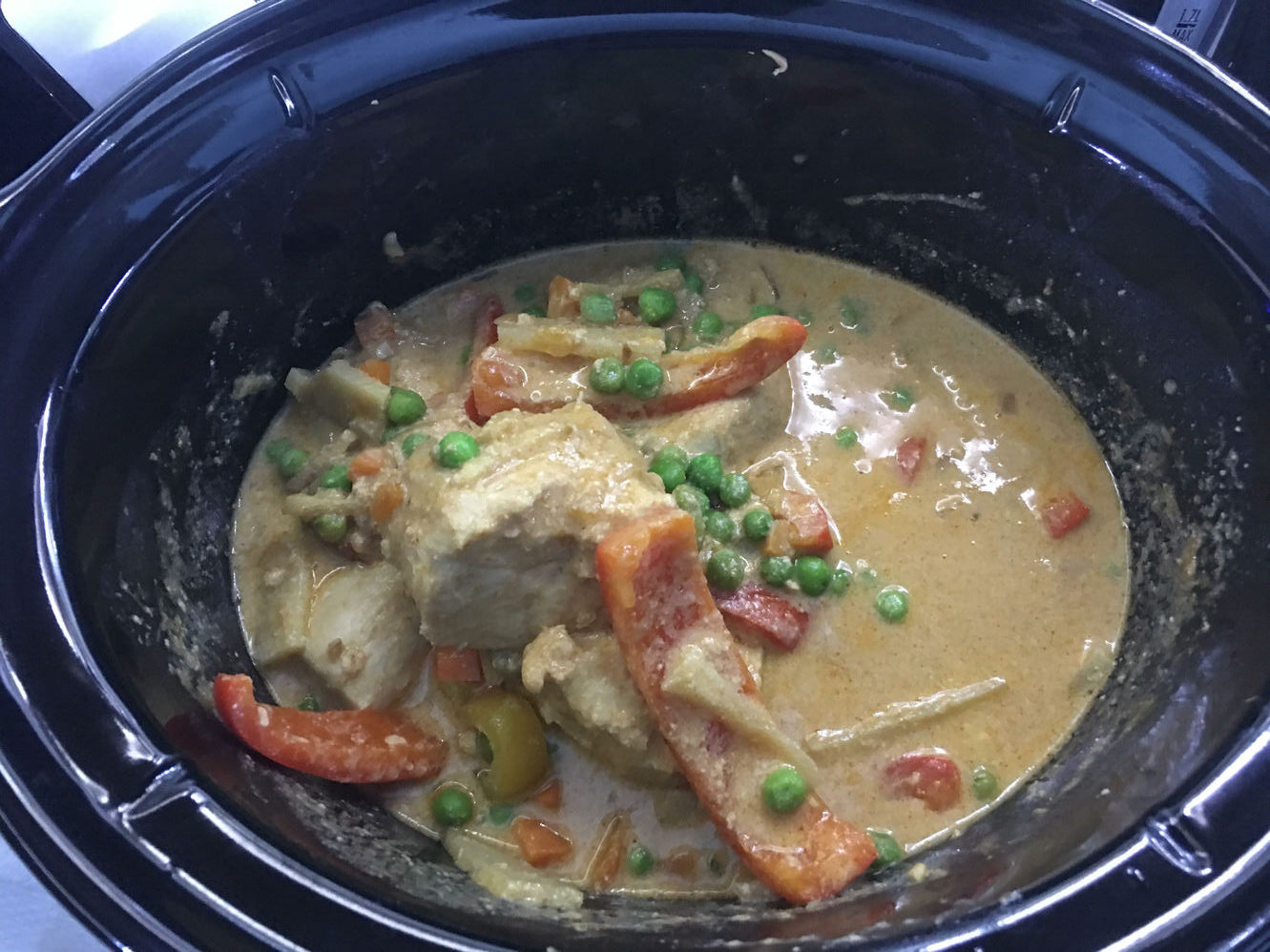
Ingredients:
Protein:
2 lbs chicken diced (2 lbs tofu or root vegetables)
Curry Sauteed:
2 tbsp oil
1 onion finely diced
1 heaping tbsp diced garlic
1 notch of root of ginger diced (roughly same volume as garlic)
2 tbsp red or green Thai curry paste (add more if you want it hotter)
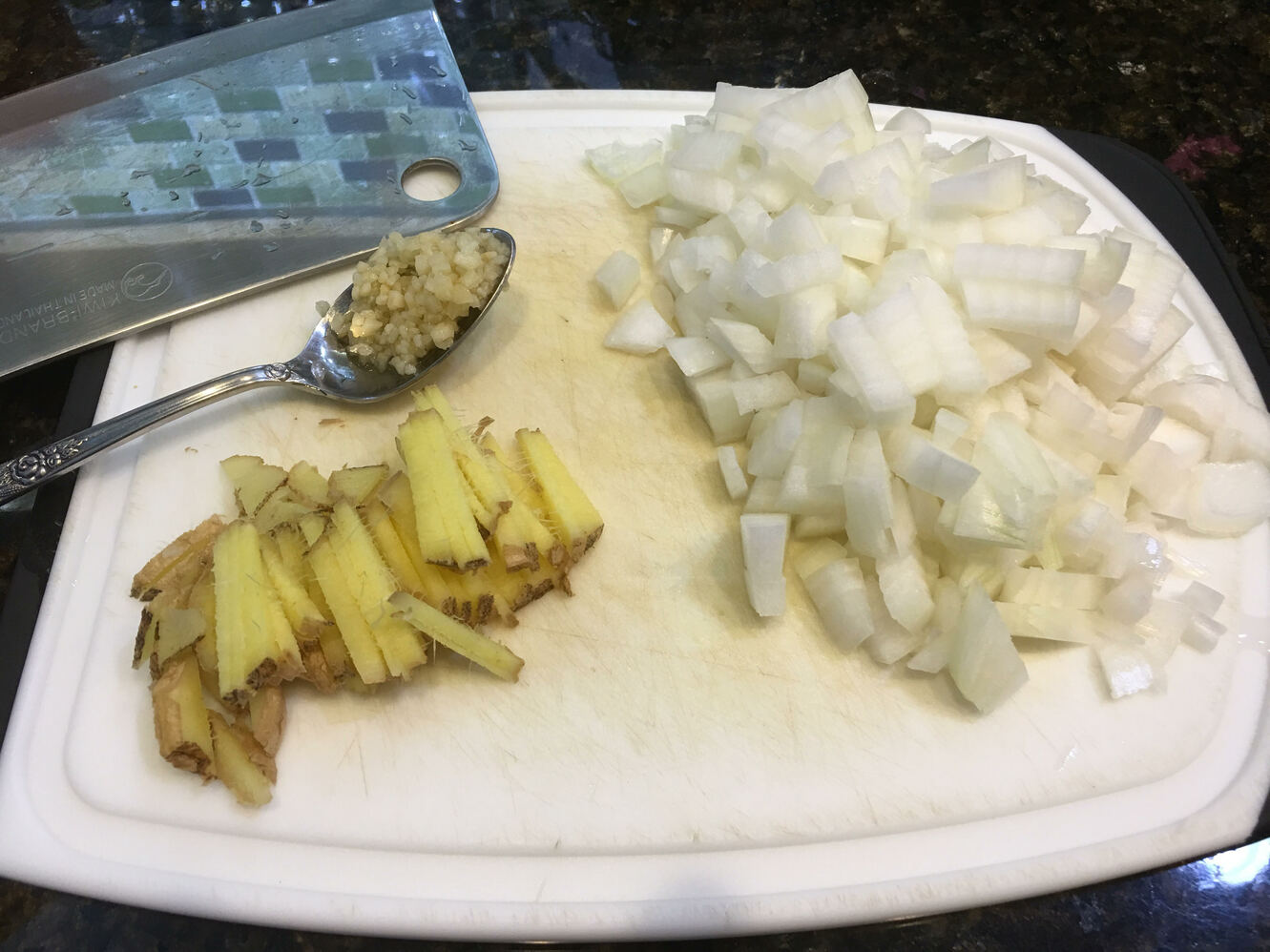
Curry Sauce:
2 13.5oz (400ml) cans coconut milk
1/2 can water
2 tbsp fish sauce (1/2 tsp vegemite vegan; some fish sauce I’ve seen occasionally has soy ingredients)
4 tbsp chicken bouillon (salt and msg for vegan)
2-4 tbsp brown sugar (the more the richer)
1-2 tbsp peanut butter (the more the richer)
Crushed red pepper to taste
Salt to taste
Vegetables:
1 small can bamboo shoots (drained, washed, and rinsed)
1-2 large carrots diced
1 zucchini diced (optional)
1 can pineapple chunks 12 oz can or so (optional)
Vegetables at the End:
1 bell pepper sliced into thin strips
1 cup peas (if frozen, set in a bowl to thaw while cooking; I like to use a mix of frozen peas, and frozen peas and carrots)
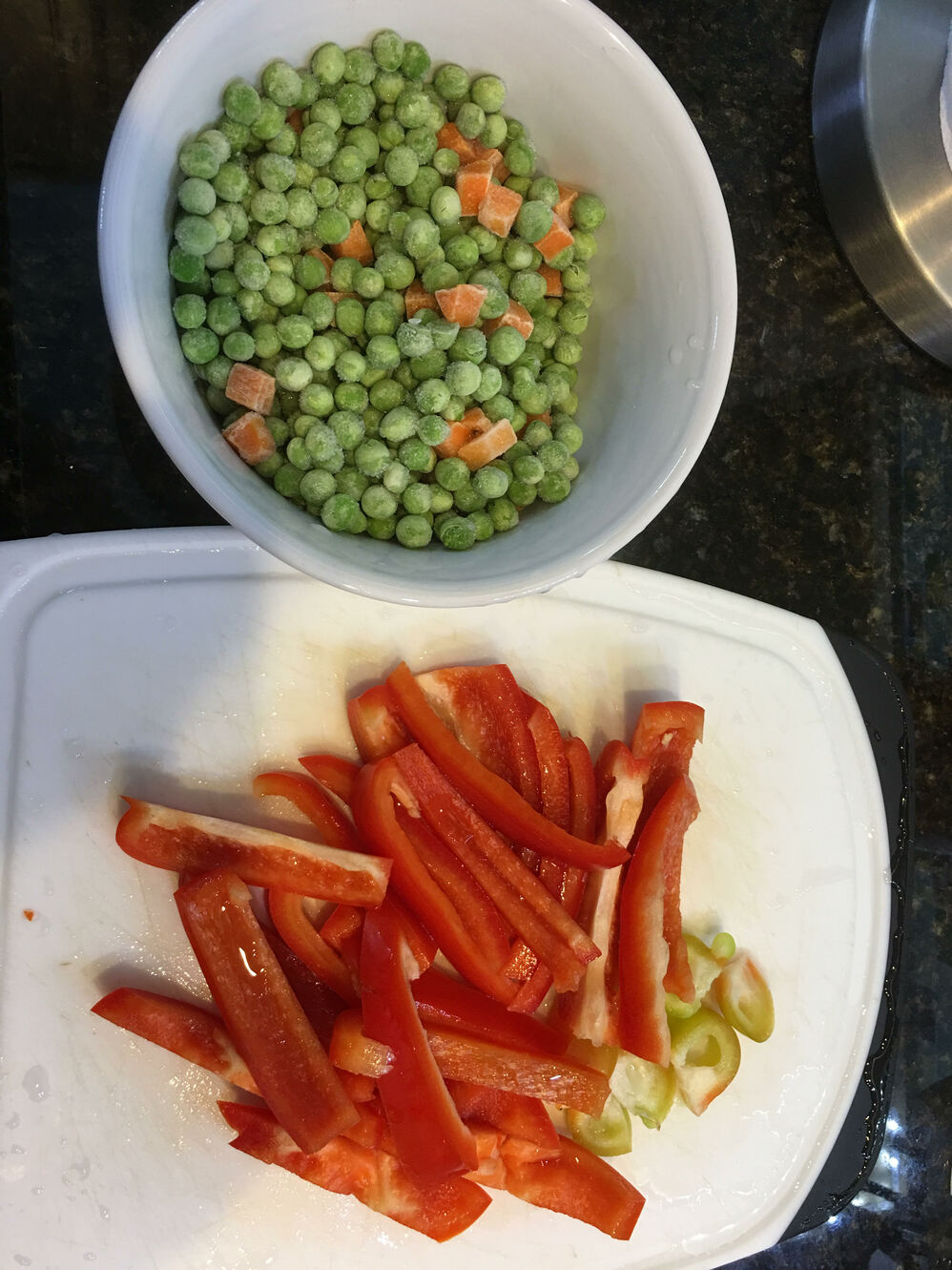
Garnish:
Diced Thai chili to taste
Thai basil to taste
The Cooking Process
Saute all of the ingredients in the Curry Sauteed section, beginning with the garlic for 1 minute on medium-high, then add the onions for 4-5 minutes or until the onions begin to become soft, then add the ginger for another 1 minute, then add the Thai curry paste for another 1 minute.
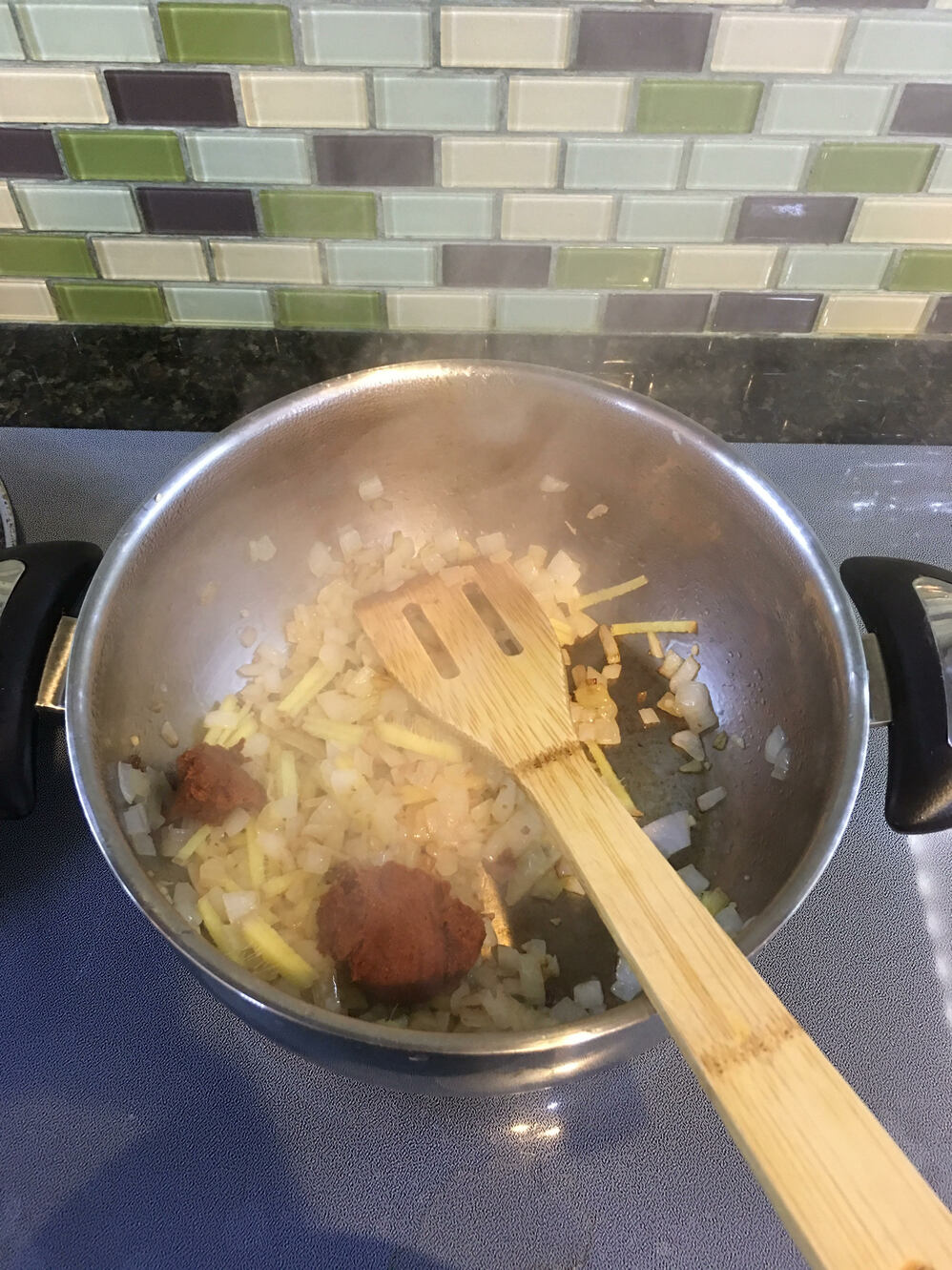
Turn the heat off and stir slowly and continuously until the pan cools enough to not sizzle (you might want to add a little water depending on how dry the curry paste is).
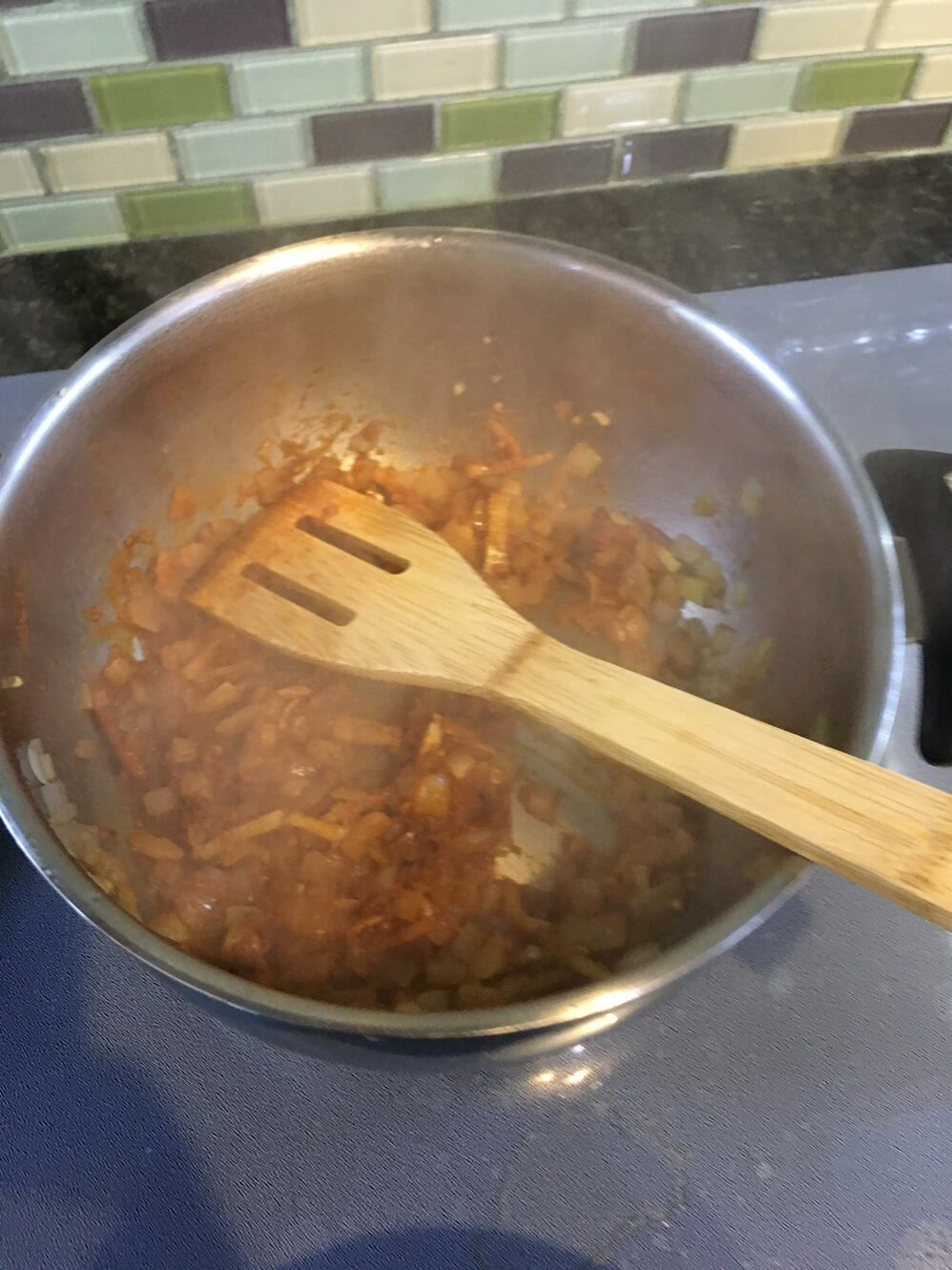
Place the ingredients into the crock pot and add the ½ can of water to the pan to deglaze it and add the resulting liquid into the crock pot. If you want a richer curry, saute the chicken on medium until it is lightly browned on 2 sides.
Add all of the ingredients in the Curry Sauce section and stir until the peanut butter has mostly dissolved. You may turn the crock pot on high to help with this process. The pineapple is optional, but can be good for making a sweeter curry if desired.
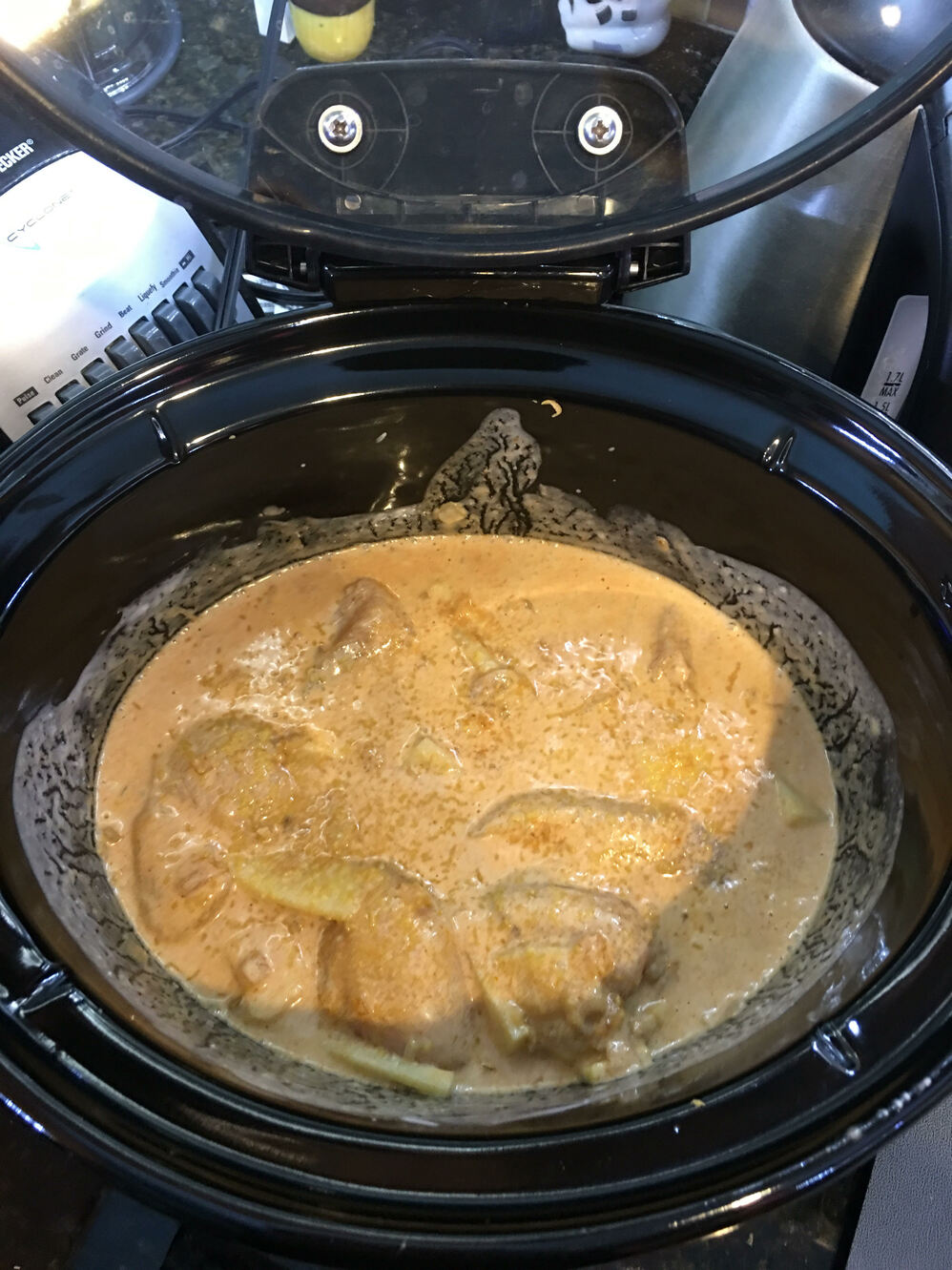
Add your meat if you are using meat (tofu should not be added at this step), and all of the things listed in the Vegetables section. Other root vegetables can be added if desired.
Turn the crockpot on high and set it for at least 3 hours on hot (at least 2 hours if you browned it). Once you hit the time mark, pop the lid and stir, then add in your peas and bell pepper (and tofu if you’re making a vegan curry and want it). Set the crockpot back on high for another 20-30 minutes (until the bell peppers begin to soften up). Stir the mix and turn off the crockpot once the time hits and leave it covered for at least 5 minutes.
Add rice to a bowl then ladle on the mix of curry, and finally garnish with whatever Thai basil and fresh Thai chili peppers you want and serve. Add salt as necessary as this recipe is a little lighter on salt.
Variations to the Recipe
I prefer this recipe with a red curry paste, but it works with a green curry paste as well. The pineapple and juice can be added to whichever is relevant, but is optional. I only make it occasionally as it is a bit on the sweet end. Zucchini is a good additive for a vegan version since it adds a bit of crunch and different texture. Adding random green leafy vegetables can also help spice this up with some variety, but those need to be added near the end. Potatoes don’t really go well with this version of curry in my opinion, but some other root vegetables work well for adding in some variety. Peanut butter may be removed altogether, but the recipe feels a lot less rich.
Some ingredients have a range, and this is due to the fact certain other ingredients are hard to control for taste. Some Thai curry pastes are saltier than others. Some coconut milk brands are richer than others as well. Most of the ingredients like peanut butter, brown sugar, etc. can be topped off at the end to adjust the flavor as necessary. As you get used to certain brands of ingredients, you’ll end up tweaking a lot of the mix to get the perfect consistency and flavor.
Certain vegetables will also contribute different flavors to the mix. Something like brocollini or yu choy or other green, leafy type vegetables can be added near the end to add a little extra healthiness without flavoring the curry too strongly. Something like plain broccoli or cabbage may be a bit too overwhelming however. Collard greens can work if they’re added in a little further from the end depending on how cooked you like your collard greens.
Another thing to try is to put this curry over noodles. Chinese egg noodles are one of my favorites for this purpose, but other kinds of noodles work well too. You can use quinoa and other grains in addition to or instead of rice for a bit more fiber and a healthier macro breakdown. I like to add a little extra water and put wheat bran or milled flax as a garnish.
There are many ways to tweak this recipe and use it however you want. I found this mix of ingredients works out to the best curry for myself and my family. Try it out and see how it works for you. We tend not to add any extra pepper during the cooking process to make it more palatable to anyone who doesn’t like peppers, but this does affect the flavor.
Conclusion
This recipe covers a basic crockpot Thai curry with several variants. This recipe is cheap and filling, and very low maintenance aside from sauteing some aromatics and (optionally) meat. This recipe can be adapted in many ways and used as the base for a lot of different Thai curry variants. This recipe also calls for very little which is hard to find anywhere which has even a small Asian market or a grocery store with a thorough enough international foods section.